Stepper motor linear actuators galore
- Details
- Hits: 14650
stepper motor linear actuators are on the rise, especially if they are the lavish ones Pneumatic cylinder can eliminate. at koco Motion their share of total sales has increased disproportionately in recent years. Reason enough to take a look behind the scenes of the extensive portfolio, which is available in standard and customer-specific versions - the latter in an immense selection, and the trend is increasing.

Contents
- System provider for drives, and the trend is rising – video statement
- Two technologies stepper motor linear drive
- Four drive versions of the linear stepper motors
- Stepper Motor Linear Actuators - Applications and Future
Drive system provider with an upward trend - video statement
Statement from Managing Director Olaf Kämmerling, Managing Director of Koco Motion GmbH in Dauchingen, on the development of Koco Motion into a system provider and the increasing demand for customer-specific linear actuators:
When are stepper motor linear actuators used?
The reasons for using linear actuators are obvious: During the Pneumatics cylinder one compressors and the required peripherals generation of compressed air required, the linear actuators have enough electrical energy to carry out a movement. At standstill, the holding current is then usually lowered, which saves energy.
In addition, all intermediate positions of the maximum stroke can be approached directly. This allows the Significantly minimize changeover times, because the linear actuator can be used very flexibly. End-of-stroke cushioning can be easily implemented by setting acceleration and deceleration ramps, while for compressed air operated linear actuators additional elements may be required to reduce the amount of compressed air.
Precise positioning, fast movement, long life
The System house Koco Motion based in Dauchingen offers a wide range of linear actuators for use in a wide range of applications that require a combination of precise positioning, fast movement and long service life.
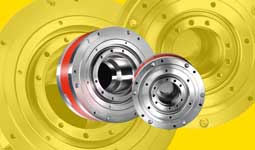 Now also large servo motor portfolio up to 8 kW
Now also large servo motor portfolio up to 8 kW
While the portfolio includes numerous standard designs, the overall range increases by customized solutions to an enormous number of variants. For example, adapted spindle, Motor- And Cableslengths, the design of the spindle ends, individual spindle pitches, Plug, winding resistances as well as step angles or special nut and slot geometries.
Custom stepper motors increasingly in demand
"The custom ones Stepper Motors are in increasing demand from us,” says Olaf Kämmerling. "That's how we come up countless combinations, from which it is really difficult for the user to choose the most suitable solution for him. We therefore advise our customers to contact us with their requirements. We have the know-how to work out the optimal solution for his application from the possibilities available to us".
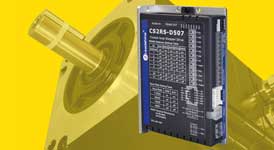 Stepper motors complete set with encoder and controller
Stepper motors complete set with encoder and controller
The linear actuators have a global home. The drives are manufactured from Dings' in China or as "Mdrive" or "Lexium Mdrive" from Schneider Electric Motion in the USA. The third basic drive comes from the modular system developed in cooperation between Koco Motion and the Liechtenstein engineering office Adlos.can Motion“. All threads then come together in Dauchingen and the customer is advised by competent drive specialists.
Two technologies stepper motor linear drive

The linear actuators in the two technologies are based on stepper motor technology permanent magnet (PM) and Hybrid offered.
PM stepper motor linear actuator for small dimensions
The rotor of the PM motor consists of a radially magnetized permanent magnet. Therefore, only limited numbers of magnetic poles can be manufactured, larger step angle result. This technology is inexpensive and can also be implemented for smaller dimensions.
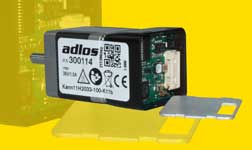 Servo motors with controller and encoder
Servo motors with controller and encoder
The PM stepper motor linear actuators have a round shape and stand in three sizes with diameters of 20, 25 and 36 mm available. The resolution of the linear movement varies from 6,5 to 333 µm / step with a maximum thrust force of 115 N - depending on the drive size, spindle pitch and step resolution of the linear actuator.
Hybrid stepper motor linear actuators for high pole counts
The hybrid stepper motor unites two drive technologies in one: It is a symbiosis of reluctance and permanent magnet motors. Toothed metal caps are attached to the axial permanent magnets. The offset of half a tooth width ensures that the north and south poles alternate. This technology allows high numbers of poles and therefore very small step angles.
The hybrid stepper motor linear actuators are available in sizes Does not have Size 8, 11, 14, 17, 23, 24 and 34 available. Depending on the step angle and spindle pitch, the resolution of the linear movement varies from 1,5 to 127 µm / step with a max. push/pull force of up to 2400 N.
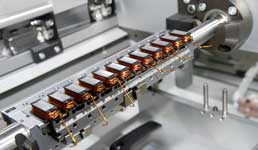 DC motor as an all-round talent for countless applications
DC motor as an all-round talent for countless applications
“Using the data mentioned, we determine the motor size and the spindle pitch as well as the design Spindle nut. Other important aspects are the possible self-locking, the available space and the control of the drive. The answer to the question: What is moved how, in what time, where, with what control parameters and how often? basically gives all the information for selecting a drive,” Olaf Kämmling explains the procedure to end the agony of choice.
Ball screw instead of trapezoidal spindle
If the standard trapezoidal spindle used is not sufficient for the application, a ball screw increase the performance even more: With it, even more precise positioning, minimized backlash, less friction, a particularly long service life and heavy loads can be implemented. In addition, most customer requirements are met thanks to the large number of quality classes, gradients, types, lengths, etc.
Both technologies are available with winding connections for unipolar or bipolar control, with the bipolar controlled version now being common. The linear actuators are either with Hollow shaft nut and spindle (with or without internal anti-rotation device) or as an external spindle and nut design.
Four drive versions of the linear stepper motors

This results in four construction methods. Both versions are available in the versions "External", "Non-Captive" and "Captive C" or "Captive K".
Linear actuators external
In execution External the linear movement is achieved by securing the nut on the spindle, which acts as a motor shaft, against twisting. This is a very popular use case. The nut is fastened in the carriage to be moved and is moved linearly by the rotary movement of the spindle. The slide must be guided by the customer.
In order to achieve a long service life and to reduce the frictional forces, it is important to precisely adjust the guide to the axis of rotation. The user has to take care of the anti-twist protection himself, for example by attaching a guide rail. With longer spindles, the free end of the spindle may have to be counter-supported.
Linear Actuators Non-Captive
Within the non captive Variant, the nut is placed in the hollow shaft of the motor. Their rotation causes the spindle to move linearly. If the spindle is fixed here, the motor moves back and forth. If the motor is fixed, the mass sits on the spindle, secured against twisting.
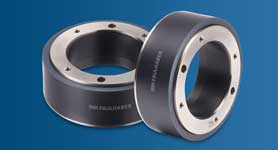 Stepper motor with hollow shaft for maintenance-free continuous operation
Stepper motor with hollow shaft for maintenance-free continuous operation
Linear Actuators Captive C
The Captive C-Version (closed system) is suitable for harsh environmental conditions. The linear movement is created here by the push rod, which is already internally secured against torsion. The push rod has an internal thread and an anti-twist device and is guided in a specially shaped housing.
When the rotor (spindle) rotates, a linear movement occurs over the screw drive and the connecting rod moves in and out. Thanks to the integrated anti-twist protection, the customer has the lowest design effort with this variant. The load is fixed at the end of the push rod.
Linear Actuators Captive K
The Captive Kversion differs from the Captive C version by the drive. The connecting rod is grooved at the front and is thus guided in a non-rotating manner. This version forms the drive together with the threaded spindle.
When the rotor rotates, the connecting rod moves in or out. It should be noted here that the threaded spindle on the back can extend depending on the stroke. Due to its smaller design, the latest variant is a very good alternative to the Captive C variant in many applications.
Stepper Motor Linear Actuators - Applications and Future
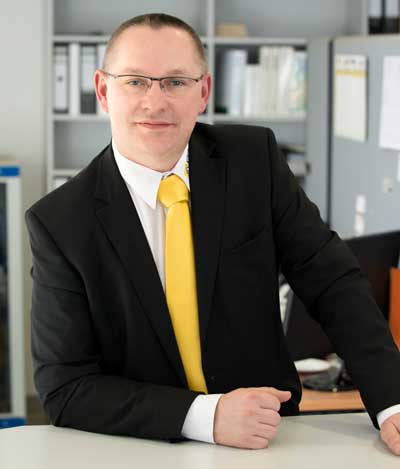 "The possible applications for these linear actuators are so diverse that I am here representative only some examples name,” says Olaf Kämmerling.
"The possible applications for these linear actuators are so diverse that I am here representative only some examples name,” says Olaf Kämmerling.
"They are used to adjust filling machines for different product widths, to adjust valves to regulate the flow rate of products to be filled, in the closure technology of injection molding tools, to position products on three levels, such as on XYZ tables, as a drive for piston pumps, dosing units and grab as well as in manipulators, belt stoppers, positioning units – in an area where linear positioning takes place.”
In general, the applications do not differ based on the ones used design of the actuators. Rather, your selection depends in part on the philosophy of the customer and the circumstances in the company or on factors such as price or the available installation space.
If the linear actuator for example positioning tasks used, the user increasingly wants to integrate it into his network. “For such applications, we can equip our drives with an integrated steering equip. Network capability is rarely required for PM linear actuators. On the other hand, the requirement for hybrid linear actuators is more on the wish list,” says the managing director.
For the factory of the future Industry 4.0 The MDrive and Lexium MDrive drives with the familiar RS485/Modbus, CANopen, Ethernet and Profinet interfaces are available for this purpose. Or they can be completed via the Kannmotion control with an RS485 or a sequence program I/O control.
"Our specialist consultants in the office and in the field help by phone, in writing or on site Drives as a coherent concept to interpret. We always focus on costs and benefits,” concludes Olaf Kämmerling.

Angela Struck is editor-in-chief of the development scout and freelance journalist as well as managing director of Presse Service Büro GbR in Ried.
